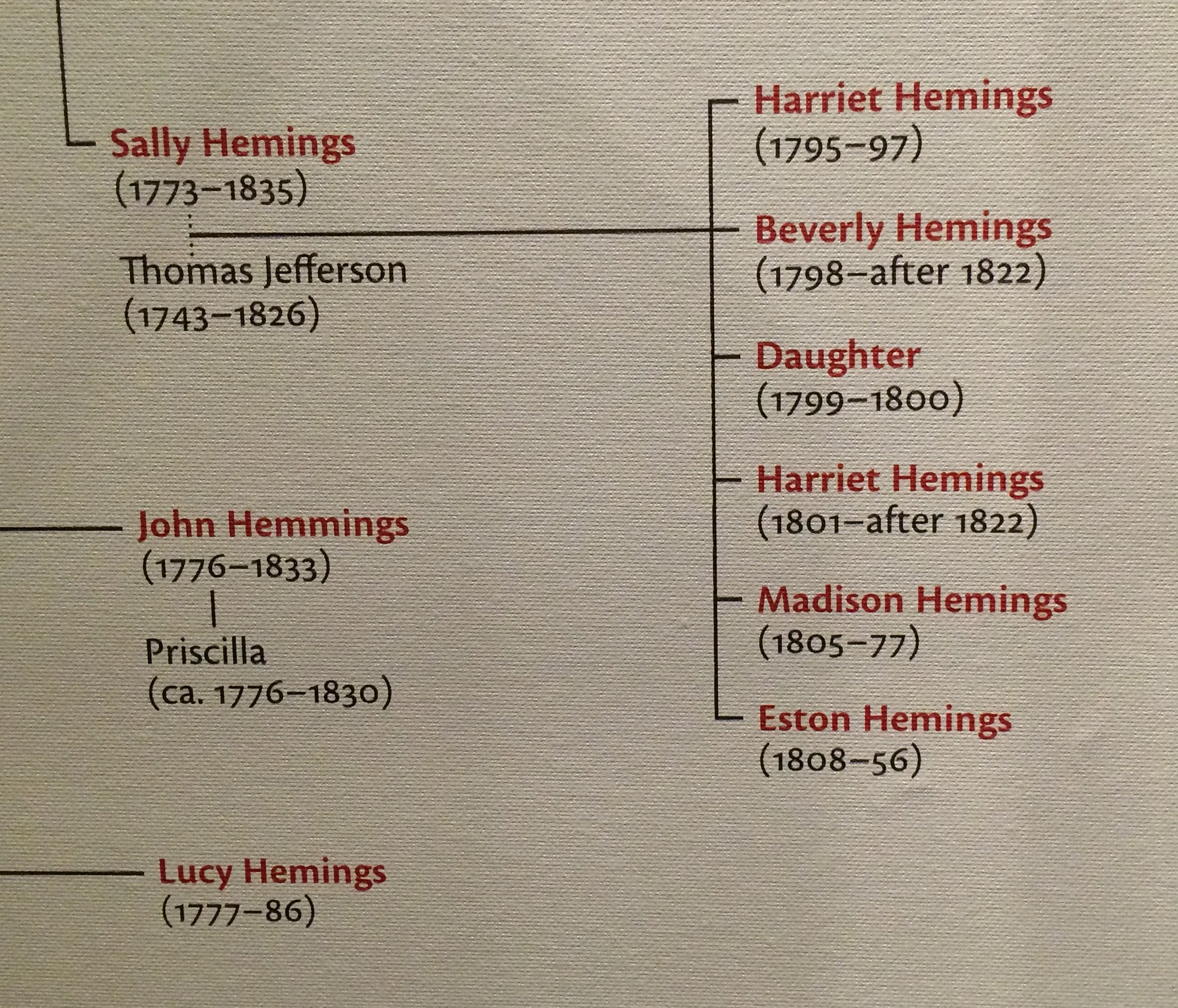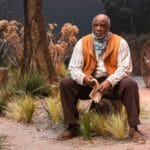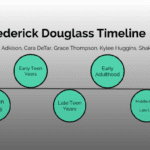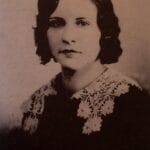Imagine living in the early 1800s, when the United States was a hotbed of racial tension. Now, picture being the son of an enslaved woman and the third President of the United States, Thomas Jefferson. That’s the story of Beverly Hemings, a man whose life was filled with both privilege and oppression. Hemings’s journey is like a mystery puzzle we’re going to solve together. We’ll use history books, stories passed down over generations, and even DNA evidence to piece together the life of Beverly Hemings, a man who dared to break the barriers of race and freedom.
The Enigmatic Life of Beverly Hemings
A Life Shrouded in Mystery
Born on April 1, 1798, Beverly Hemings entered a world already buzzing with whispers about his parents: his mother, Sally Hemings, an enslaved woman of mixed race owned by Thomas Jefferson, and his presumed father, Thomas Jefferson, the United States’ third president. It was a relationship steeped in controversy, its true nature debated even today. While we know Beverly grew up at Monticello, Jefferson’s famous Virginia estate, the details of his life there are scarce. We catch glimpses of him – a skilled craftsman and a gifted musician – but his experiences, his thoughts, remain largely hidden.
Leaving Monticello: A Question Mark
In 1822, at the age of 24, Beverly Hemings left Monticello. Why he left, and what happened next, are questions that continue to puzzle historians. Some believe he sought to escape the suffocating grasp of slavery and forge his own path to freedom. Others speculate that Jefferson himself orchestrated Beverly’s departure, a desperate attempt to shield his own reputation from the scandal of an interracial son. The truth, like so many aspects of Beverly’s life, remains elusive.
Did Beverly “Pass” as White?
The mystery deepens. According to stories passed down through the Hemings family, Beverly Hemings didn’t just disappear into anonymity; he assumed a new identity, a white one. His brother Madison claimed Beverly married into a prosperous white family in Maryland and had a daughter. But these family stories, while compelling, lack the weight of concrete evidence. Without official records, photographs, or other tangible proof, Beverly’s life after Monticello remains shrouded in uncertainty.
Uncovering a Hidden History
Beverly Hemings’ story, fragmented and incomplete, underscores the challenges historians face when researching the lives of enslaved people. Official records, often crafted through the lens of slave owners, rarely captured the full truth of their existence. It’s like piecing together a shattered mirror, each shard offering a glimpse of a life lived, but never the complete picture.
Today, researchers painstakingly trace genealogical records, analyze oral histories, and scrutinize every scrap of available evidence, hoping to piece together the puzzle of Beverly’s life. Each new discovery, however small, brings us closer to understanding his journey and the choices he might have made in a society deeply divided by race.
Beverly’s Life: A Reflection of a Tumultuous Era
Beverly Hemings’ story transcends the personal. It offers a window into the complex and often brutal realities of slavery in America, where race determined one’s destiny, and freedom, for many, seemed an impossible dream. Whether he chose to “pass” or carved out a different path, Beverly’s life compels us to confront the legacy of slavery and its enduring impact on American society. His story, though incomplete, is a testament to the resilience and humanity of those who navigated the treacherous terrain of a nation grappling with its own deeply flawed identity. He reminds us that history is not just about grand narratives and famous figures; it’s about the often untold stories of ordinary individuals struggling for dignity, freedom, and the chance to define their own lives.
What Happened to Beverly Hemings?
Beverly Hemings, the son of Sally Hemings and, according to historical consensus, Thomas Jefferson, seemed to vanish into thin air back in 1822. This mystery has puzzled historians for ages. Some experts believe he decided to live his life as a white man, while others think he might have left to escape danger or prejudice. Even with all the digging and searching, Beverly Hemings’s story remains a bit of an unsolved puzzle.
Here’s the thing: in those days, figuring out your racial identity wasn’t always so black and white, especially for someone like Beverly Hemings. He had light skin, which could have made it possible for him to blend in with the white community. Think of it like starting a whole new life with more freedom and opportunities. But there’s a catch – “passing” as white would have meant turning his back on his family and his roots. That’s a tough choice, right?
There’s another side to this story too. It’s possible that Beverly Hemings simply wanted to build a family free from the chains of slavery. By disappearing into white society, he could have shielded his future family from the prejudice and hardship that came with being connected to slavery. Sadly, without any solid proof, it’s hard to say for sure.
Trying to piece together Beverly Hemings’ life is like working on a puzzle with missing pieces. Historians have to rely on stories passed down through generations and tiny bits of evidence they can find. It’s like trying to solve a mystery with only half the clues! These stories give us some hints, but they also leave us with even more questions.
Beverly Hemings’ story reminds us that things aren’t always simple, especially when it comes to race and identity. It also shows how hard it is to uncover the truth about people whose lives weren’t always written down in history books.
Are There Any Living Descendants of Sally Hemings?
DNA evidence strongly suggests that Sally Hemings and Thomas Jefferson had at least six children together. Of these children, four lived to become adults: Beverly, Harriet, Madison, and Eston. Interestingly, their lives took different paths. Some of Hemings’ descendants chose to live as white, while others embraced their African American heritage. This difference in how they identified themselves led to a variety of experiences within the family.
Adding to the complexity, the Monticello Association, a group made up of Jefferson’s descendants, is still debating whether to fully recognize Hemings’ descendants and grant them the same burial rights. This debate has sparked important conversations about making things right historically and finding ways to reconcile the past.
While the exact number of Sally Hemings’ living descendants remains a mystery, their family story offers a powerful way to understand the lasting effects of slavery on families and how people form their identities in America. The Hemings family line reminds us that history is complex and often intertwined with personal experiences.
How Old Was Sally Hemings When Her Relationship with Thomas Jefferson Began?
The exact age of Sally Hemings when her sexual relationship with Thomas Jefferson began is a subject of ongoing debate among historians. Hemings was born into slavery in 1773, and many historians believe their relationship probably began sometime in the 1780s.
Some historians suggest that Hemings was likely in her early teens when the relationship began, which raises serious concerns about the power dynamics at play, considering Jefferson’s position of authority over Hemings as her owner. Others propose that she might have been a bit older when it began, though still a young woman during that time period. The lack of definitive documentation from those years makes it difficult to pinpoint an exact age.
Adding to the complexity, we have to think about the complete lack of power Hemings had in that situation. Being enslaved meant she had no agency to consent to a relationship. This makes the entire situation incredibly troubling, raising serious moral and ethical questions about what their relationship really was.
Then, in 1998, DNA evidence significantly impacted the debate. The testing confirmed that Jefferson fathered at least one of Hemings’ children, backing up those historical whispers about their relationship. This discovery served as a stark reminder of the often unspoken realities of slavery in America. It forced people to confront the uncomfortable truths of power, control, and exploitation that marked that period.
Sally Hemings’ story, though shrouded in uncertainty, provides a glimpse into a painful and complex chapter of American history. It’s a story that continues to challenge our understanding of race, power, and the legacy of slavery.
How Many Children Did Thomas Jefferson Have with Sally Hemings?
Historical records indicate that Sally Hemings gave birth to six children during her time at Monticello. These children were: Harriet (born in 1795 and sadly passed away in 1797), Beverly (born in 1798 and lived beyond 1822), an unnamed daughter (1799-1800), Harriet (1801-after 1822), Madison (1805-1877), and Eston (1808-1856). DNA testing has provided compelling evidence that supports the claim that Jefferson was indeed the father of at least one of Sally Hemings’ children, and many historians believe it’s likely he fathered all six based on the available evidence.
This situation reflects the stark reality of power dynamics and the deeply ingrained racial hierarchy that existed during that period in American history. We’re talking about a time when slavery was an accepted part of society, and the relationship between a slave owner and an enslaved person was inherently unequal.
While we can’t go back in time and fully understand every detail of their relationship, we can learn from the historical accounts and interpretations. The story of Sally Hemings and her children provides a window into a challenging chapter of American history, compelling us to examine the complexities of race, slavery, and consent during that era.
For a chilling and thought-provoking read, delve into the eye-opening revelations of Behold a Pale Horse by William Cooper. Step into the captivating world of Barbara Daly Baekeland and her tragic journey. Discover the enigmatic life and literary legacy of Baroness Blixen. Witness the extraordinary faith and resilience of Bernie Mac. Uncover the wild and adventurous life of Big Nose Kate, a remarkable frontier woman. Journey into the shadows with Billie Frechette, a femme fatale who left an unforgettable mark on history. Sail the high seas with the notorious Black Sam Bellamy or immerse yourself in the swashbuckling exploits of Black Sam, the Pirate. Trace the tragic love story of Blanche Barrow, Bonnie and Clyde’s forgotten companion. And finally, delve into the life and legend of Bonnie Parker, the infamous outlaw who captured the nation’s imagination.













1 thought on “The Elusive Trail of Beverly Hemings: Unraveling the Mystery of Thomas Jefferson’s Son”
Comments are closed.